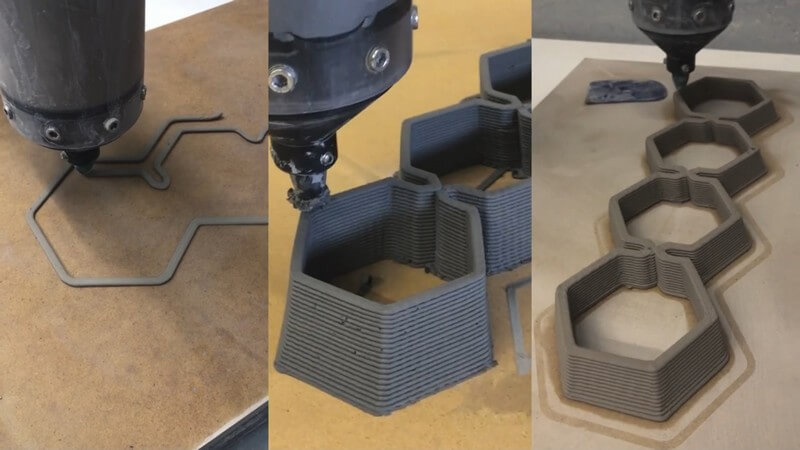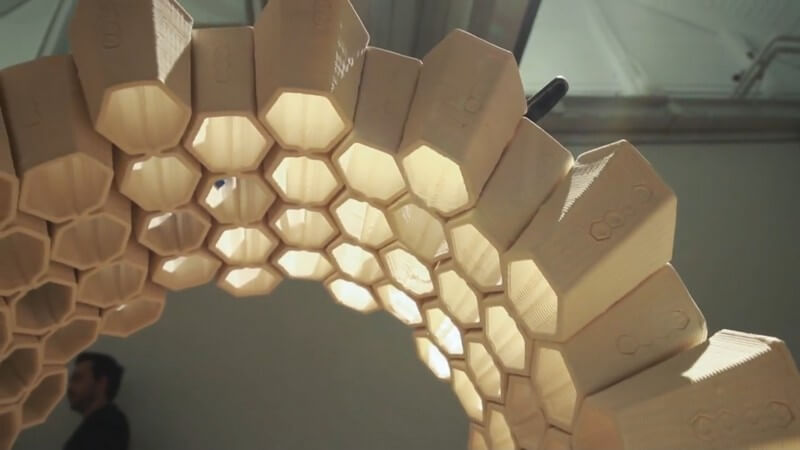3D Printing with Clay
Students at the University of Waterloo School of Architecture in Cambridge, Ontario are bringing a whole new meaning to mixed media as they take on both 3D printing and the use of ancient clay building materials.

A recent case study explains how 18 master’s students began a deep exploration not only of new technology but also endeavoring to make incredibly unique—and massive—objects, over a meter tall, including: A wall that whistles, An arch doubling as a sundial, A beautiful façade with intricate loops.

Taking full advantage of the benefits of 3D design and printing, this student work is a perfect example of the infinite potential offered by both 3D design and printing; in other words, pretty much all you have to do is come up with a concept and then put it into action—whether in making solid objects or others that may also be integrated with electronics and more.

Here, the initial idea in using the new $20,000 3D printer at their school was simple: design a wall made from brick. The technology was new to everyone, so not only were they embarking on a design journey, but also one in learning about formidable new hardware. Professor David Correa states that as he sent the students on their way to begin, even he did not know what to expect.

The students were split into groups of three, each on a mission to fabricate masonry from the 3D printer. And while learning how to operate a new 3D printer (sponsored by MasonryWorx) for creating an industrial product may have seemed like the greatest challenge, first they were immersed in the world of materials science—learning about clay. Not only did they have to understand more about manipulating the material, and its properties, but also more about how it would respond in 3D printing.

With a world of customization available to them in both design and 3D printing capability, the students were able to design every brick to required specifications for the intricate projects at hand; for example, one wall not only whistled, but projected a variety of notes depending on the direction and velocity of the wind.
 3D printing with clay has offered a path to innovation for designers around the world, from experimenting with nanoclay for bioprinting better scaffolds to clay nanocomposites with PLA to the use of 3D printing in sculpture.
3D printing with clay has offered a path to innovation for designers around the world, from experimenting with nanoclay for bioprinting better scaffolds to clay nanocomposites with PLA to the use of 3D printing in sculpture.






























Comments